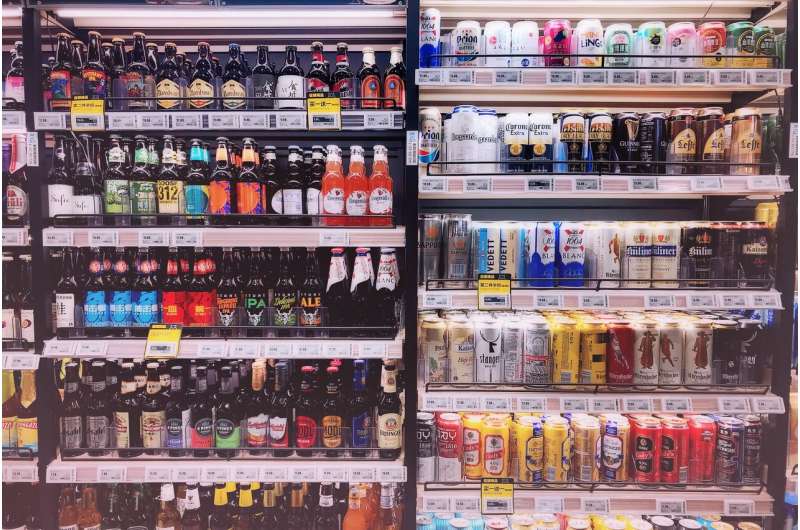Alcohol ads lead to youth drinking, should be more regulated, experts say

The marketing of alcoholic beverages is one cause of underage drinking, public health experts conclude. Because of this, countries should abandon what are often piecemeal and voluntary codes to restrict alcohol marketing and construct government-enforced laws designed to limit alcohol-marketing exposure and message appeal to youth.
These conclusions stem form a series of eight review articles published as a supplement to the Journal of Studies on Alcohol and Drugs, which synthesized the results of 163 studies on alcohol advertising and youth alcohol consumption.
"[T]here is persuasive evidence that exposure to alcohol marketing is one cause of drinking onset during adolescence and also one cause of binge drinking," write James D. Sargent, M.D., of the C. Everett Koop Institute at Dartmouth, and Thomas F. Babor, Ph.D., M.P.H., of the University of Connecticut, in a conclusion to the supplement.
Each of the eight review articles in the supplement evaluated a different aspect of alcohol marketing and drinking among young people. The reviews covered hundreds of studies that used different research designs and measurement techniques, and the data came from a variety of countries and scientific disciplines.
The authors of the reviews used the Bradford Hill criteria—a well-known framework for determining causal links between environmental exposures and disease—to determine whether marketing is a cause of youth alcohol use. The same criteria have been used to establish that smoking is a cause of cancer and that tobacco marketing is one cause of youth smoking. Hill's causality criteria involve determining the strength of association, consistency of the link, specificity of the association, temporal precedence of the advertising exposure, biological and psychological plausibility, experimental evidence and analogy to similar health risk exposures (e.g., tobacco advertising).
Sargent and Babor note that each of the Bradford Hill criteria were met within the eight reviews, supporting a modest but meaningful association between alcohol advertising and youth drinking.
Although such a relationship had been previously known, this is the first time any public health expert has explicitly concluded that advertising causes drinking among adolescents. As a result, the authors recommend the following:
- Government agencies—independent from the alcohol industry—should restrict alcohol marketing exposures in the adolescent population. Often, advertising restrictions apply to only certain hours of television broadcasting, to certain types of drinks, or to certain formats. Further, new promotional methods on social media are even less regulated. "Although statutory bans can be circumvented," the authors write, "research suggests they are far more effective than voluntary codes."
- The Centers for Disease Control and Prevention or the Office of the Surgeon General should sponsor a series of reports on alcohol and health, similar to the ones that have been published on tobacco. Reports from these government agencies can serve as a guide to public health policy, but there have been few reports on underage drinking and no reports alcohol marketing and its effects.
- The U.S. National Institute on Alcohol Abuse and Alcoholism should resurrect its program to fund research on alcohol marketing and vulnerable populations. There is need for continued study on this topic, and funding has recently been directed to other priorities. "t is disappointing that alcohol marketing research is no longer a programmatic priority at NIAAA," the authors write.
- A larger international panel of public health experts should be convened in order to reach a broader consensus, particularly in relation to digital marketing. There is also a need for an international agreement to restrict alcohol marketing along the lines of the United Nations' Framework Convention on Tobacco Control.
To the extent that modest causal evidence has been found in a range of countries, and plausible mechanisms have been identified as possible mediating factors, Sargent and Babor expressed the hope that the findings will promote "thoughtful discourse among researchers, effective prevention measures among policymakers, and an effort to reach consensus on this issue among a larger and more representative body of scientists."
More information: James D. Sargent et al, The Relationship Between Exposure to Alcohol Marketing and Underage Drinking Is Causal, Journal of Studies on Alcohol and Drugs, Supplement (2020). DOI: 10.15288/jsads.2020.s19.113














